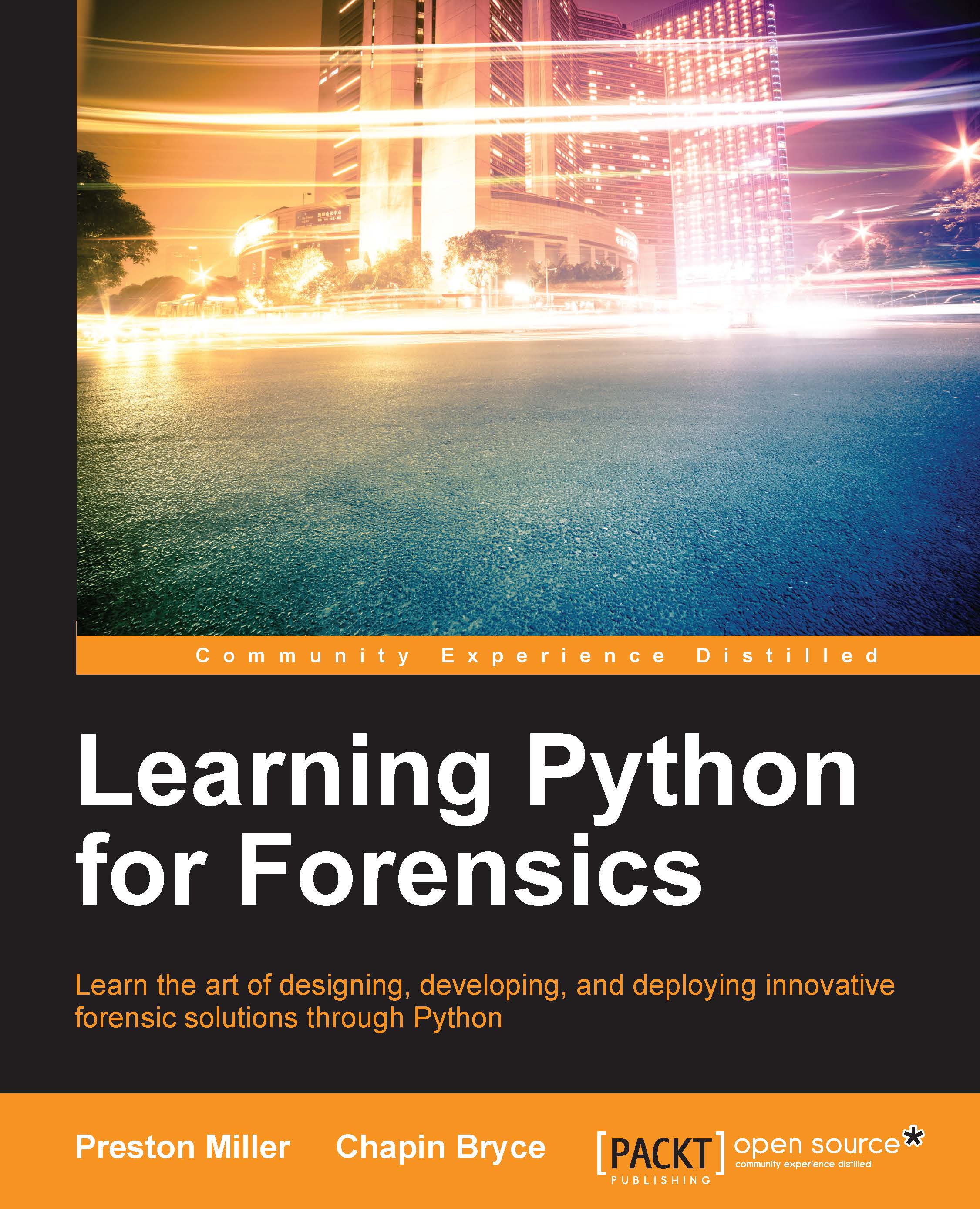-
Book Overview & Buying

-
Table Of Contents

Learning Python for Forensics
By :

Learning Python for Forensics
By:
Overview of this book
This book will illustrate how and why you should learn Python to strengthen your analysis skills and efficiency as you creatively solve real-world problems through instruction-based tutorials. The tutorials use an interactive design, giving you experience of the development process so you gain a better understanding of what it means to be a forensic developer.
Each chapter walks you through a forensic artifact and one or more methods to analyze the evidence. It also provides reasons why one method may be advantageous over another. We cover common digital forensics and incident response scenarios, with scripts that can be used to tackle case work in the field. Using built-in and community-sourced libraries, you will improve your problem solving skills with the addition of the Python scripting language. In addition, we provide resources for further exploration of each script so you can understand what further purposes Python can serve. With this knowledge, you can rapidly develop and deploy solutions to identify critical information and fine-tune your skill set as an examiner.
Table of Contents (18 chapters)
Preface
 Free Chapter
Free Chapter
1. Now For Something Completely Different
2. Python Fundamentals
3. Parsing Text Files
4. Working with Serialized Data Structures
5. Databases in Python
6. Extracting Artifacts from Binary Files
7. Fuzzy Hashing
8. The Media Age
9. Uncovering Time
10. Did Someone Say Keylogger?
11. Parsing Outlook PST Containers
12. Recovering Transient Database Records
13. Coming Full Circle
A. Installing Python
B. Python Technical Details
C. Troubleshooting Exceptions
Index



